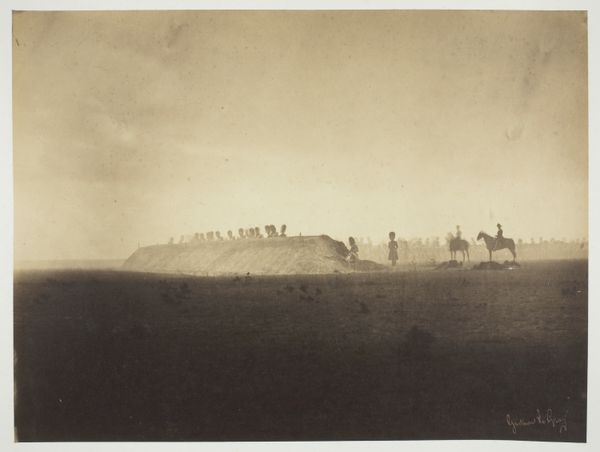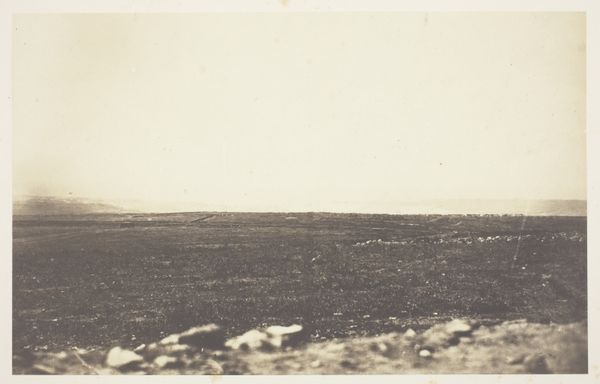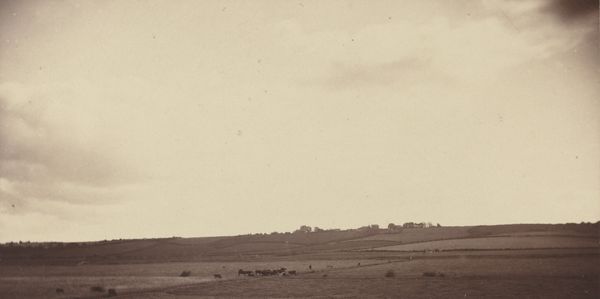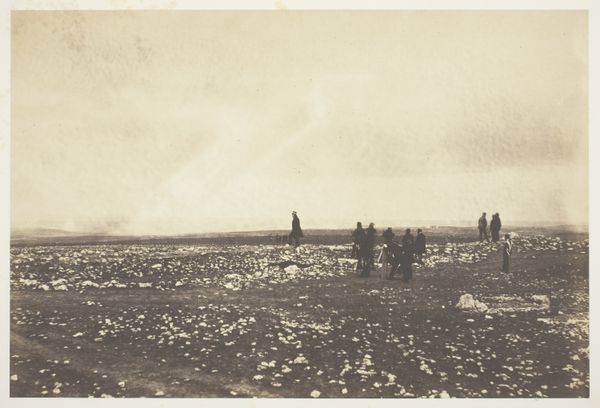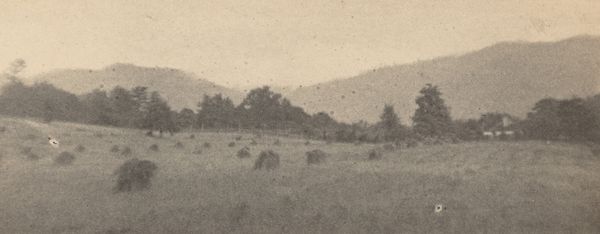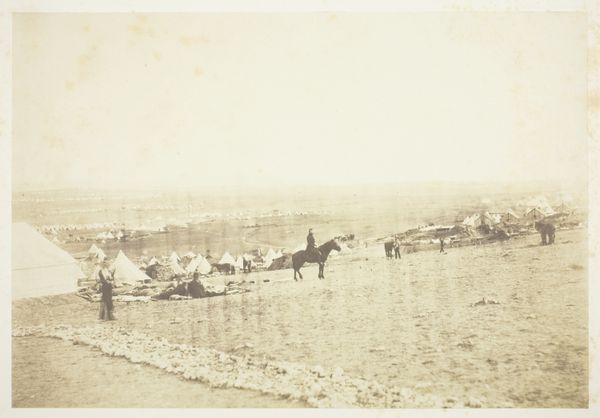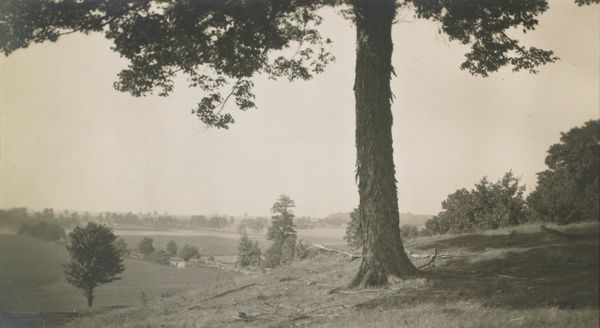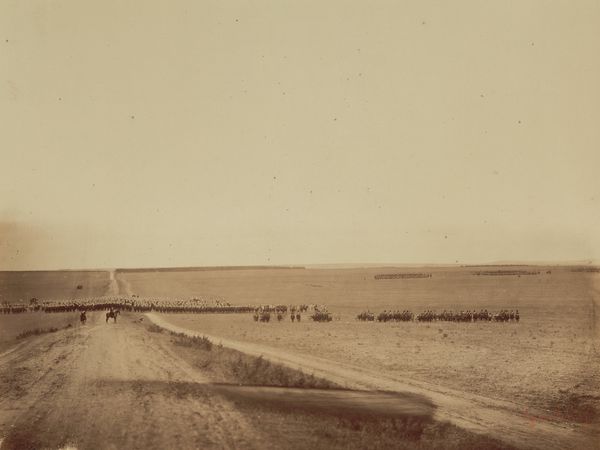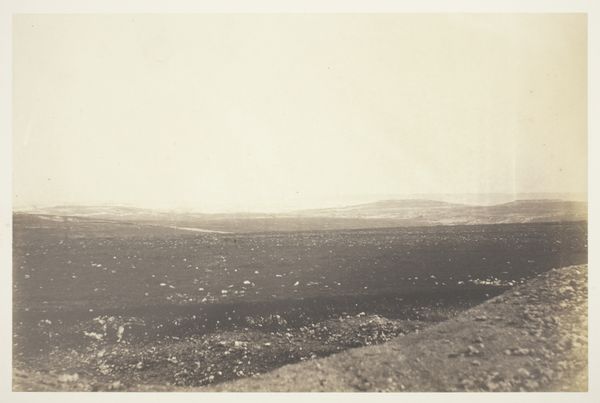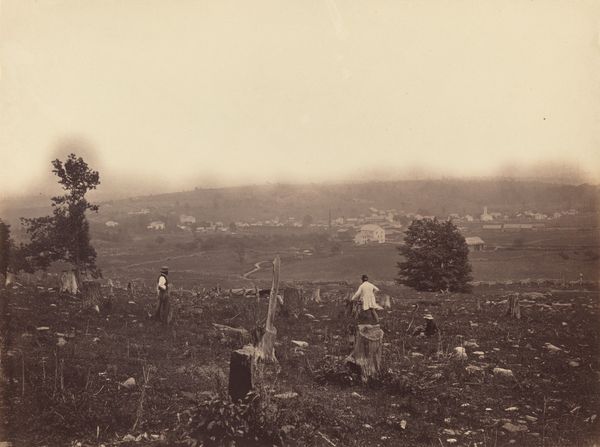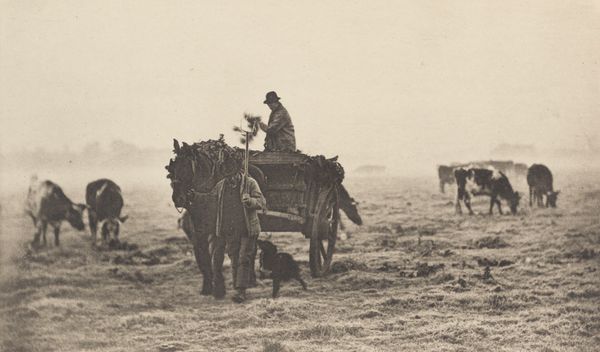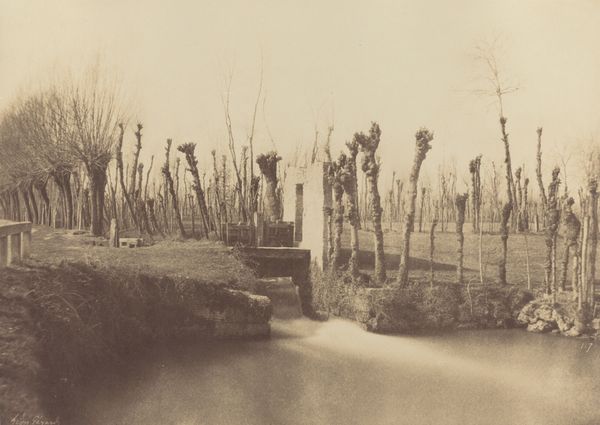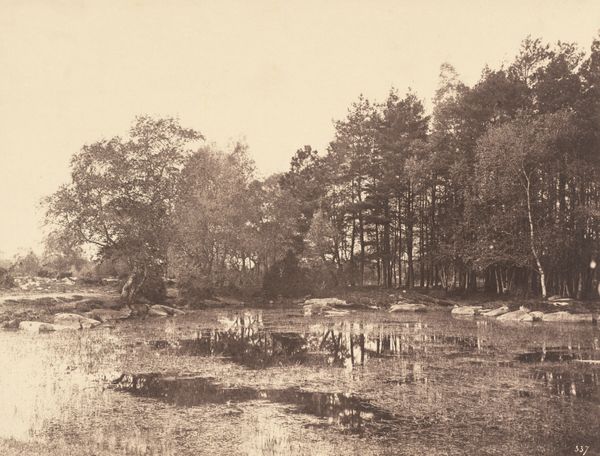
Dimensions: image: 13.1 x 17.1 cm (5 3/16 x 6 3/4 in.) mount: 37.9 x 27.9 cm (14 15/16 x 11 in.)
Copyright: National Gallery of Art: CC0 1.0
Editor: This is William B. Post's "Pasadena Landscape," taken in 1899. It's a gelatin silver print, and it has a sort of hazy, dreamlike quality to it. What do you see when you look at this work? Curator: Immediately striking is the masterful tonal range Post achieves. Notice how the composition utilizes a limited palette, yet the photograph still distinguishes subtle modulations in light and shadow. What effect does this restrained contrast create? Editor: I think it gives it a very muted and soft feel. The eye isn't drawn to any particular spot but instead drifts around the frame. Curator: Precisely. The horizon line's placement divides the picture into roughly two equal areas, with land in the lower half and sky above. How does this symmetry influence your perception? Editor: It makes the landscape feel stable and grounded, like it's really settled there. Although I’d have expected horses to be featured more centrally! Curator: Note that this photographic image aligns with some tenets of pictorialism – focusing less on pure representation, more on evoking feeling. Does the absence of strong focal point weaken, or strengthen, the overall impact of the image? Editor: That’s interesting. Thinking about the lack of clear focus in this light, I agree that adds more the atmosphere and feeling than the realism of a distinct landscape. Curator: Indeed. The subject serves less as an objective record and more as a starting point. Editor: That’s a helpful reframing of what I was seeing! Curator: Agreed. This analysis reveals that visual qualities communicate most profoundly here.
Comments
No comments
Be the first to comment and join the conversation on the ultimate creative platform.
